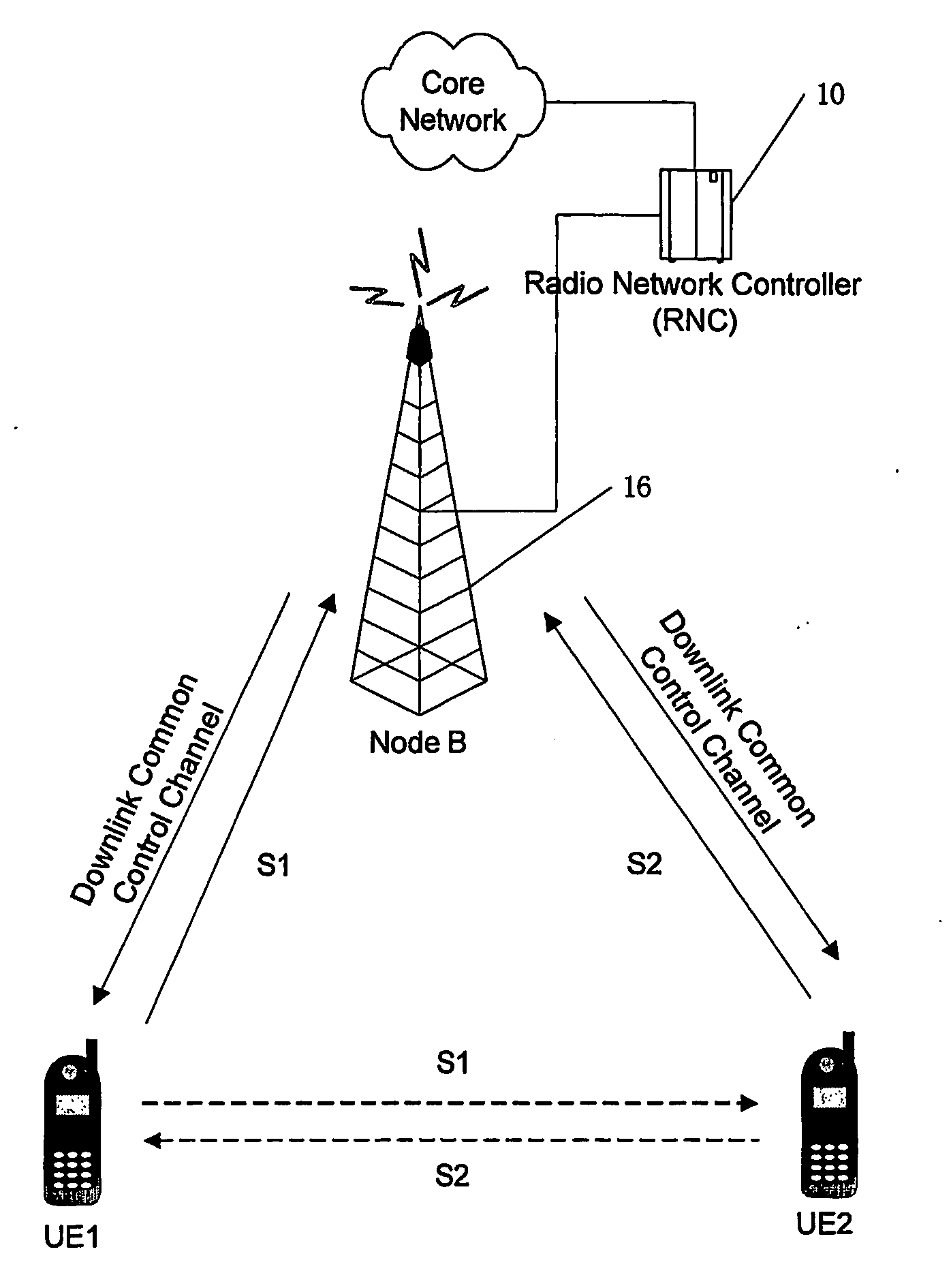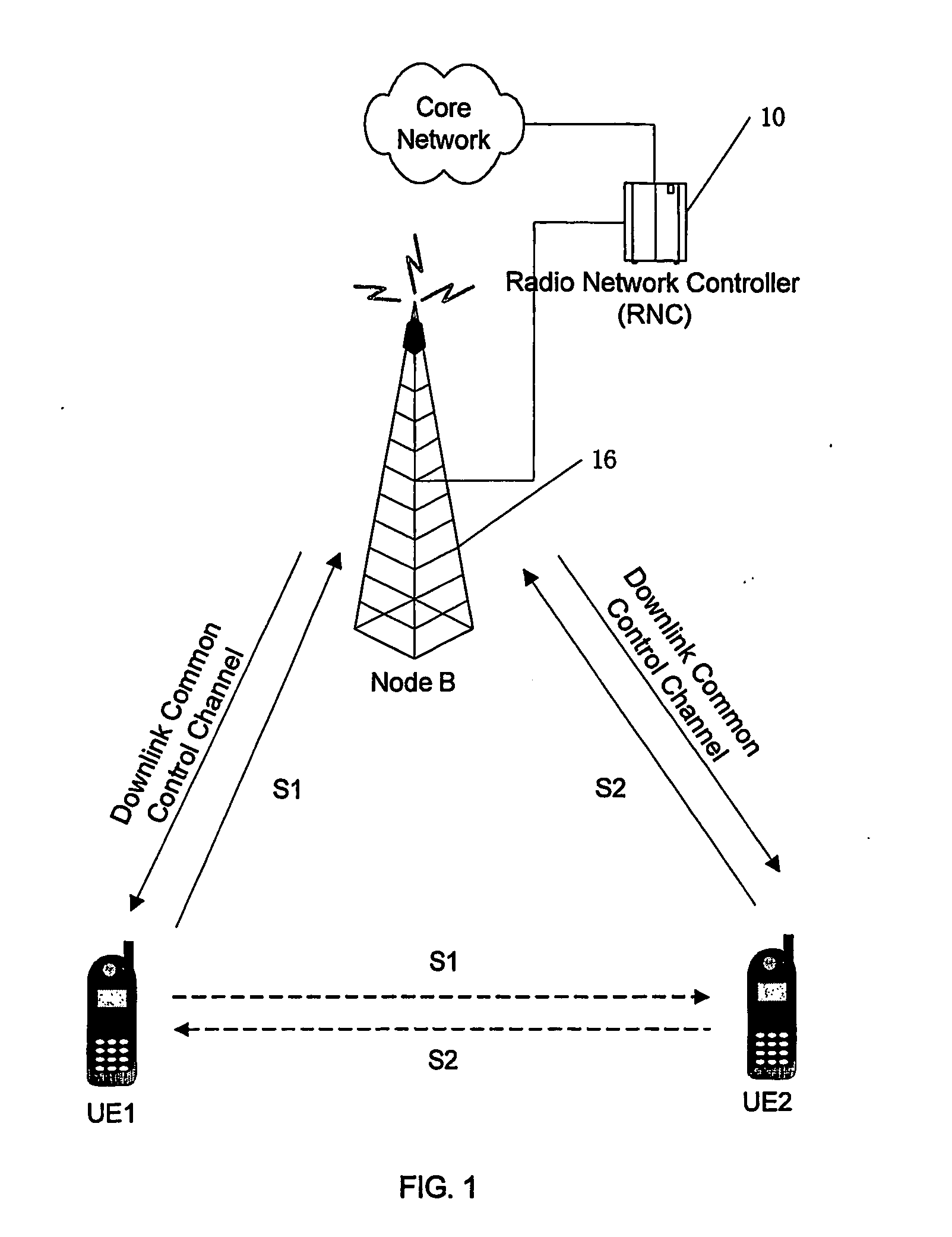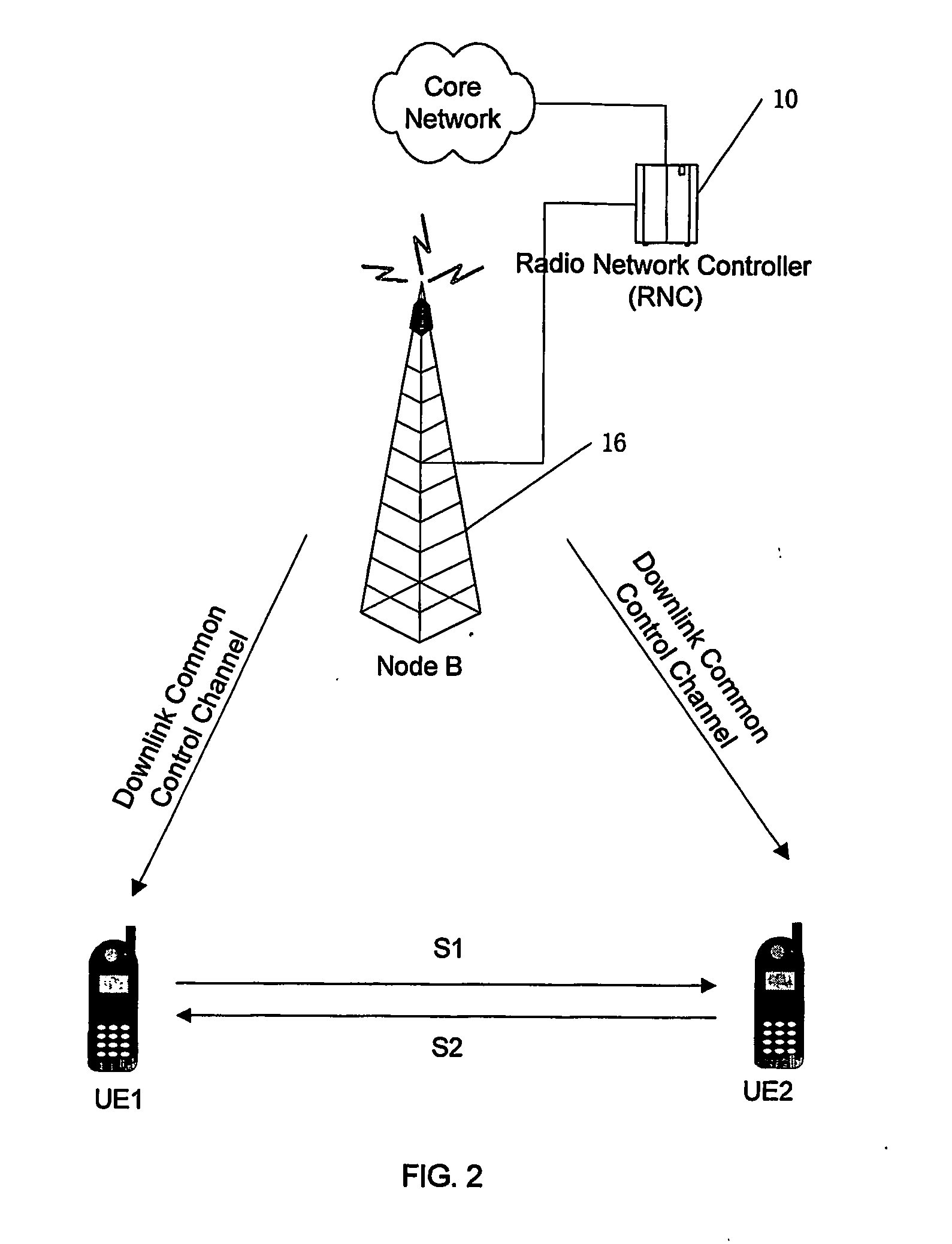Method and system for establishing wireless peer-to-peer communications
a wireless peer-to-peer communication and wireless communication technology, applied in the field of self-organization wireless communication network systems for peer-to-peer communication, can solve the problems of removing valuable radio resources, unable to allocate separate channels for testing, and creating complexity in the re-allocation scheme of radio resources, so as to achieve simple and effective effects
- Summary
- Abstract
- Description
- Claims
- Application Information
AI Technical Summary
Benefits of technology
Problems solved by technology
Method used
Image
Examples
Embodiment Construction
[0017]FIG. 1 illustrates an initial stage for setting up peer-to-peer communication in a wireless communication network system (e.g., Universal Terrestrial Radio Access Network (UTRAN)) environment, according to one embodiment of the invention. Before a peer-to-peer communication link is established between two mobile terminals UE1 and UE2, the UTRAN that comprises a radio network controller (RNC) 10 and a Node B (i.e., a base station) 16 will first determine whether the distance between UE1 and UE2 is within the acceptable range for peer-to-peer communication. If so, each of the mobile terminals will be requested to listen to the dedicated uplink channel, S1 or S2, between the UTRAN and the other UE (illustrated by the dash lines in FIG. 1) and test the respective channel characteristics. If the quality of the channels meets the requirements of a direct communication for a pre-determined duration, the mobile terminals will be allowed to use the radio resources originally allocated ...
PUM
 Login to View More
Login to View More Abstract
Description
Claims
Application Information
 Login to View More
Login to View More - R&D
- Intellectual Property
- Life Sciences
- Materials
- Tech Scout
- Unparalleled Data Quality
- Higher Quality Content
- 60% Fewer Hallucinations
Browse by: Latest US Patents, China's latest patents, Technical Efficacy Thesaurus, Application Domain, Technology Topic, Popular Technical Reports.
© 2025 PatSnap. All rights reserved.Legal|Privacy policy|Modern Slavery Act Transparency Statement|Sitemap|About US| Contact US: help@patsnap.com



